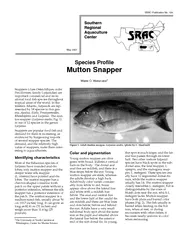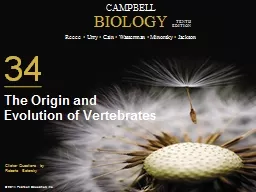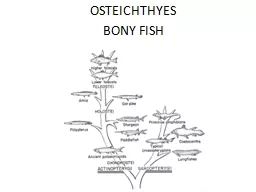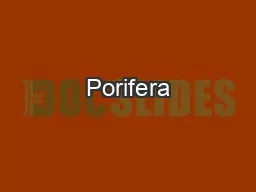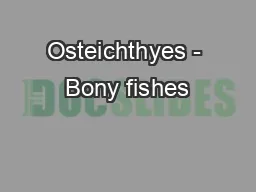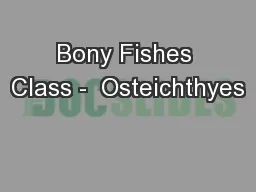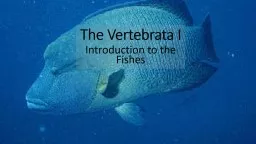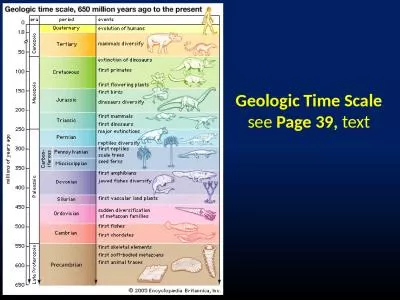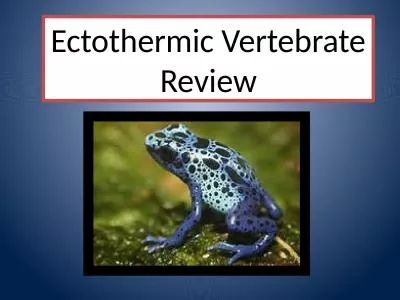PPT-Osteichthyes
Author : tatyana-admore | Published Date : 2017-09-26
The Bony Fish Class Osteichthyes Characterized by having Bone in their skeleton An operculum covering the gill openings A swimbladder or lungs True scales Paired
Presentation Embed Code
Download Presentation
Download Presentation The PPT/PDF document "Osteichthyes" is the property of its rightful owner. Permission is granted to download and print the materials on this website for personal, non-commercial use only, and to display it on your personal computer provided you do not modify the materials and that you retain all copyright notices contained in the materials. By downloading content from our website, you accept the terms of this agreement.
Osteichthyes: Transcript
The Bony Fish Class Osteichthyes Characterized by having Bone in their skeleton An operculum covering the gill openings A swimbladder or lungs True scales Paired fins Homocercal tail Exception lungfish diphycercal. These organs are usually paired Female gonads ovaries produce eggs and are usually pink red or orange in colour and are covered in numerous blood vessels Male gonads testes produce sperm and are usually white cream or grey in colour Reproduction The Color and pigmentationYoung mutton snapper are olivegreen with broad, indistinct verticalbars on the body. The dorsal andanal fins are reddish, and there is ablue stripe below the eye. Youngmutton sn Which of the following traits is shared by all vertebrates, at least in some developmental stages, except the lampreys?. notochord. vertebrae. cartilaginous skeleton. cranium (head). mouth with jaws. Lampreys are...facesucking vampires?. lampreys hagfish Chondrichthyes Osteichthyes. Cyclostomata. Vertebrata. Cyclostomata Gnathostomata. Cyclostomata. Vertebrata. BONY FISH. FINS. CAUDAL . . FORWARD MOVEMENT. PAIRED FINS. PECTORAL . . TURNING AND STOPPING. PELVIC . . TURNING AND STOPPING. MEDIAL FINS. DORSAL . . BALANCE. ANAL . . BALANCE. CAUDAL. Cnidaria. Ctenophora. Rotifera. Nematoda. Nemertea. Mollusca. Annelida. Arthropoda. Bryozoa. Phoronida. Brachiopoda. Echinodermata. Chordata. No true tissues. radial symmetry. diploblastic. true tissues. anterior. posterior. Phylum . Chordata. Subphylum . Urochordata. (. Tunicata. ). Subphylum . Cephalochordata. “. Craniata. ” group. Subphylum Vertebrata. Superclass . Agnatha. Superclass . Gnathostomata. Fish- multiple fish that belong to the same species. Fishes- multiple fish that belong to different species. “Fish” versus “Fishes”. All . have…. At least one bone in their skeleton. Scales. Scientific Classification-. Class . Osteichthyes. Class . Osteichthyes. includes all bony fishes. . Like all fishes, . Osteichthyes. are cold-blooded vertebrates that breathe through gills and use fins for swimming.. Traditional organization of Vertebrate Taxonomy. AGNATHA -Jawless Fishes. CHONDRICHTHYES -Sharks, skates, rays and chimeras. OSTEICHTHYES -Bony Fishes. AMPHIBIA -Amphibians. REPTILIA -Reptiles. MAMMALIA -Mammals. Page 39, . text. Precambrian. Phylogeny of the Fishes. The first vertebrates to appear in the fossil record occurred in the late Cambrian Period (. ~. 500 mya). These were jawless armored fishes known as . Identify the Frog Parts. esophagus. liver. Gall bladder. pancreas. spleen. kidney. l. arge intestine. bladder. Small intestine. testis. f. at body. stomach. lungs. heart. Frog Body Parts and Functions.
Download Document
Here is the link to download the presentation.
"Osteichthyes"The content belongs to its owner. You may download and print it for personal use, without modification, and keep all copyright notices. By downloading, you agree to these terms.
Related Documents


